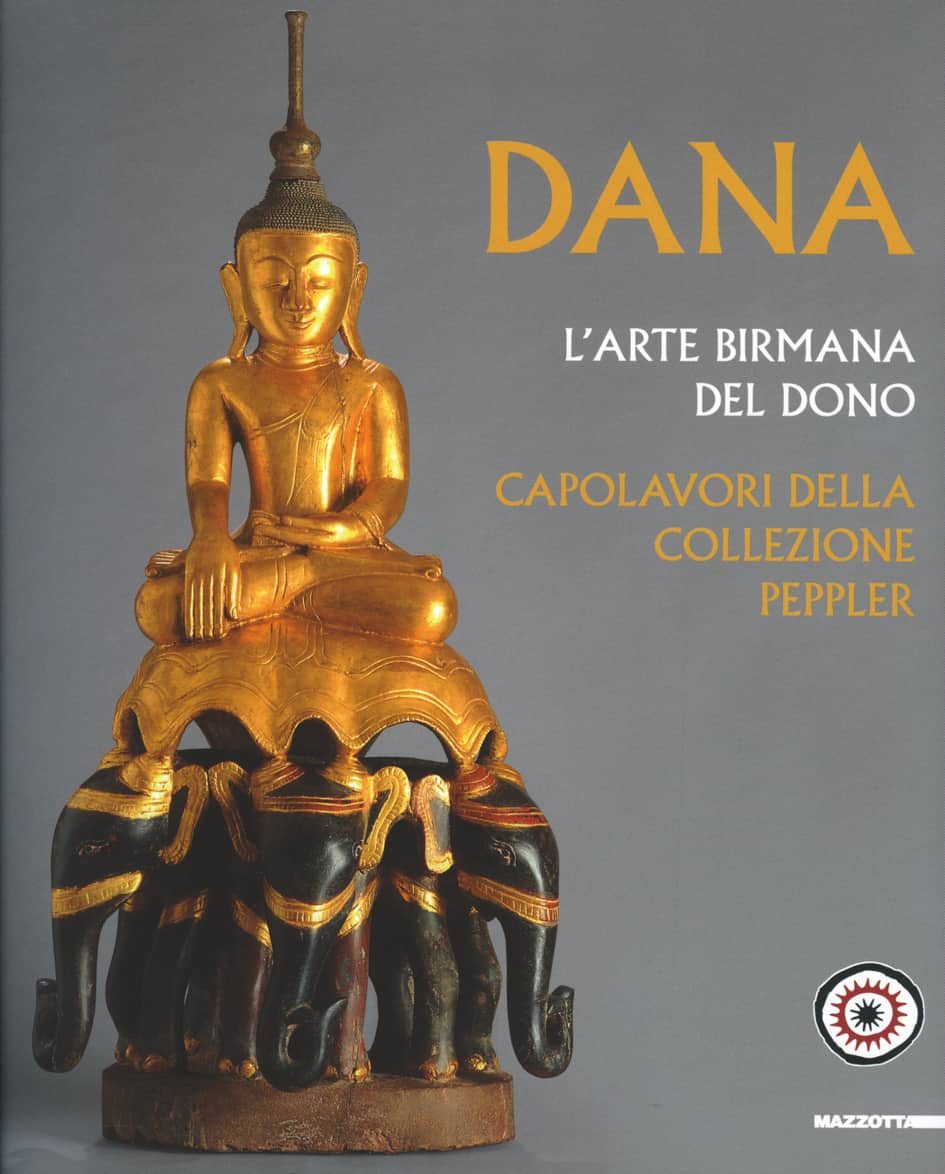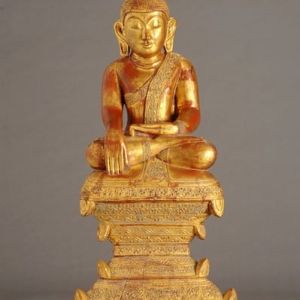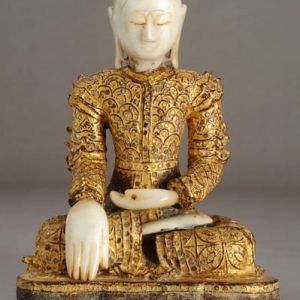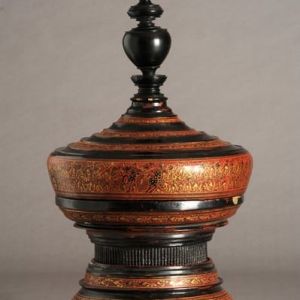HELENEUM LUGANO
The temporary exhibition offers a fascinating journey into Burmese culture through a fine selection of works of art that have in common that they are a kind of “aesthetic vector” for achieving a state of spiritual perfection. These include statues of the Buddha, representations of territorial tutelary spirits and refined vessels, all mostly lacquered and decorated with the gold leaf gilding technique, used for ceremonial purposes or for domestic use. The 63 works on display are a selection of the larger collection of 167 works of art and material culture deposited by the collector Willem Peppler at MUSEC. The leitmotif of the exhibition is the gift, the key to understanding Burmese society, its art and its aesthetic concept. Each work documents in its own way the practice of spiritual offering that constitutes one of the cultural dominants of Burmese civilisation. The temporary exhibition and its catalogue are the result of many years of research work by the museum in which some of the world’s leading experts on Burmese art have collaborated.

The temporary exhibition presents 63 works of art from Burma, mainly created between the 19th and 20th centuries. The works, which are diverse in nature and material, are representative of Burmese arts and techniques. Statues of Buddhas and tutelary spirits, offering and household vessels, betel vessels and gongs are produced from wood, dry lacquer, stone and metal. The exhibition is divided into four sections that correspond to the four contexts in which the gift is inscribed: Buddhism, the cult of tutelary spirits, everyday life and the court.
The first section depicts the Buddhist ritual context, the main destination of Burmese art and its most important source of inspiration. In the frame formed by the reconstruction of a domestic altar and references to pagoda and monastery settings, various kinds of art and material culture are displayed, including Buddha statues and offering vessels. The Buddhist dana has both an otherworldly purpose in that it contributes to the improvement of karma and spiritual progression towards nirvana, and a worldly purpose in that it brings concrete benefits already in the present life in the form of wealth, health and beauty. It also enhances the individual’s prestige and thus also has social value. Finally, since the one who performs an offering shares its merits with the family, the village and all living beings, it also contributes to the well-being and karmic progression of humanity as a whole. The second section is dedicated to the cult of the nat, the tutelary spirits of Burma belonging to pre-Buddhist traditions. This cult coexists, even today, with Buddhism to which it has been partially integrated over the centuries. Its purpose is to resolve social, family and economic issues. The section recreates a setting for a ceremony dedicated to the 37 main natgana pwe (natgana pwe). In the centre is an altar, on which a number of statues and offerings are arranged. Enriching the section is a film of a ceremony, in which the dance of the mediums manifests possession and is a form of homage to the spirits. The third section presents gifts made in the everyday sphere as an expression of Burmese friendliness and hospitality. The gift, in this sense, is configured as the expression and nourishment of social ties through a true ‘art of living’. The reconstruction of a domestic environment is completed by the display of betel containers, cigar boxes and special low tables used for serving meals. The objects of material culture, made with great refinement, are in several cases adorned with rich decorations depicting court scenes or astrological signs. The fourth and final section is dedicated to the court context where gifts are an expression of opulence and social hierarchy. The exhibition is enriched by some multimedia insights.
In 2012, MUSEC dedicated a scientific seminar to the theme of gifts in Burmese art and culture, which was attended by five of the world’s leading experts on Burmese culture. The results of the seminar are now presented to the public in the essays in the catalogue.





